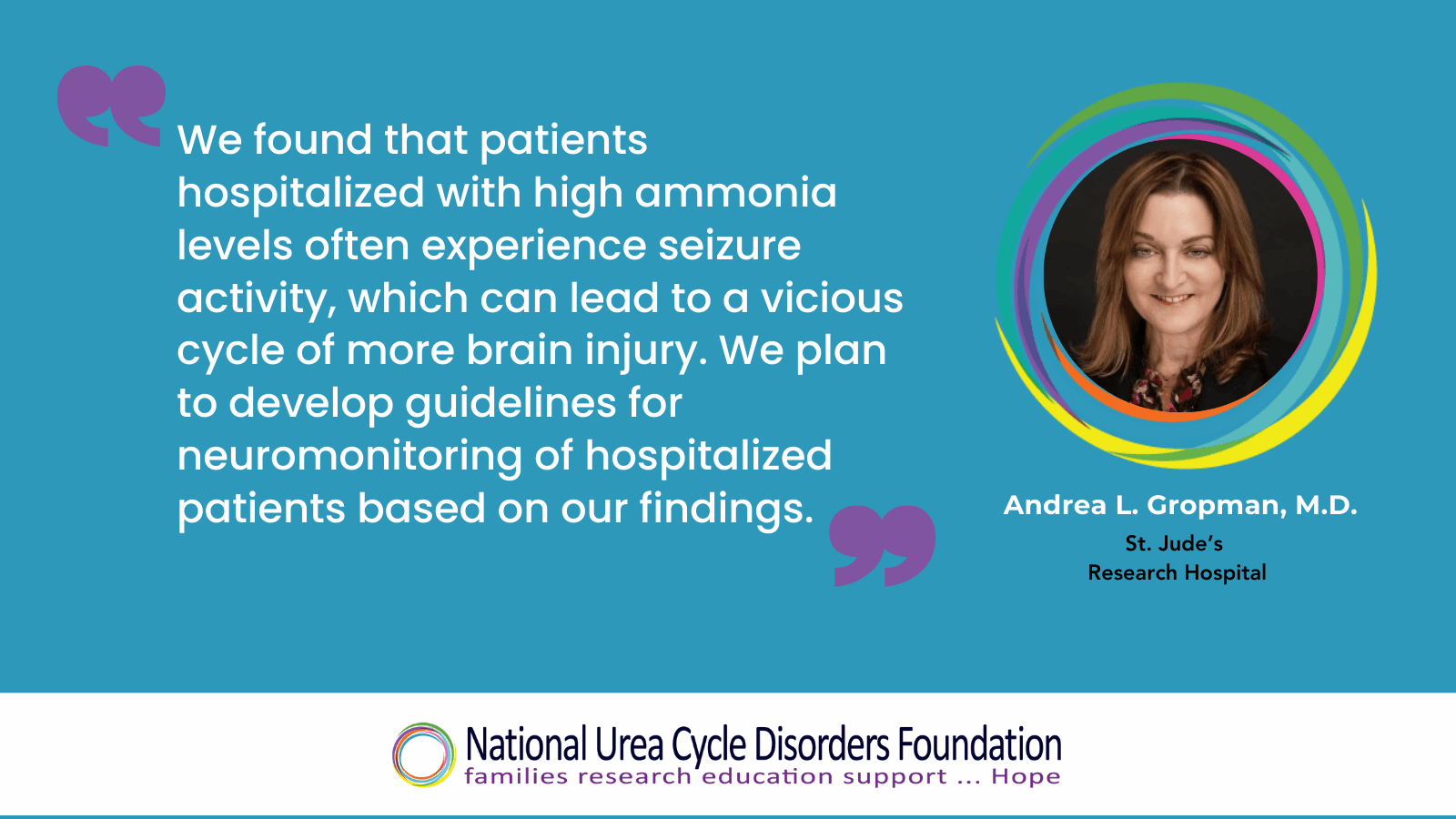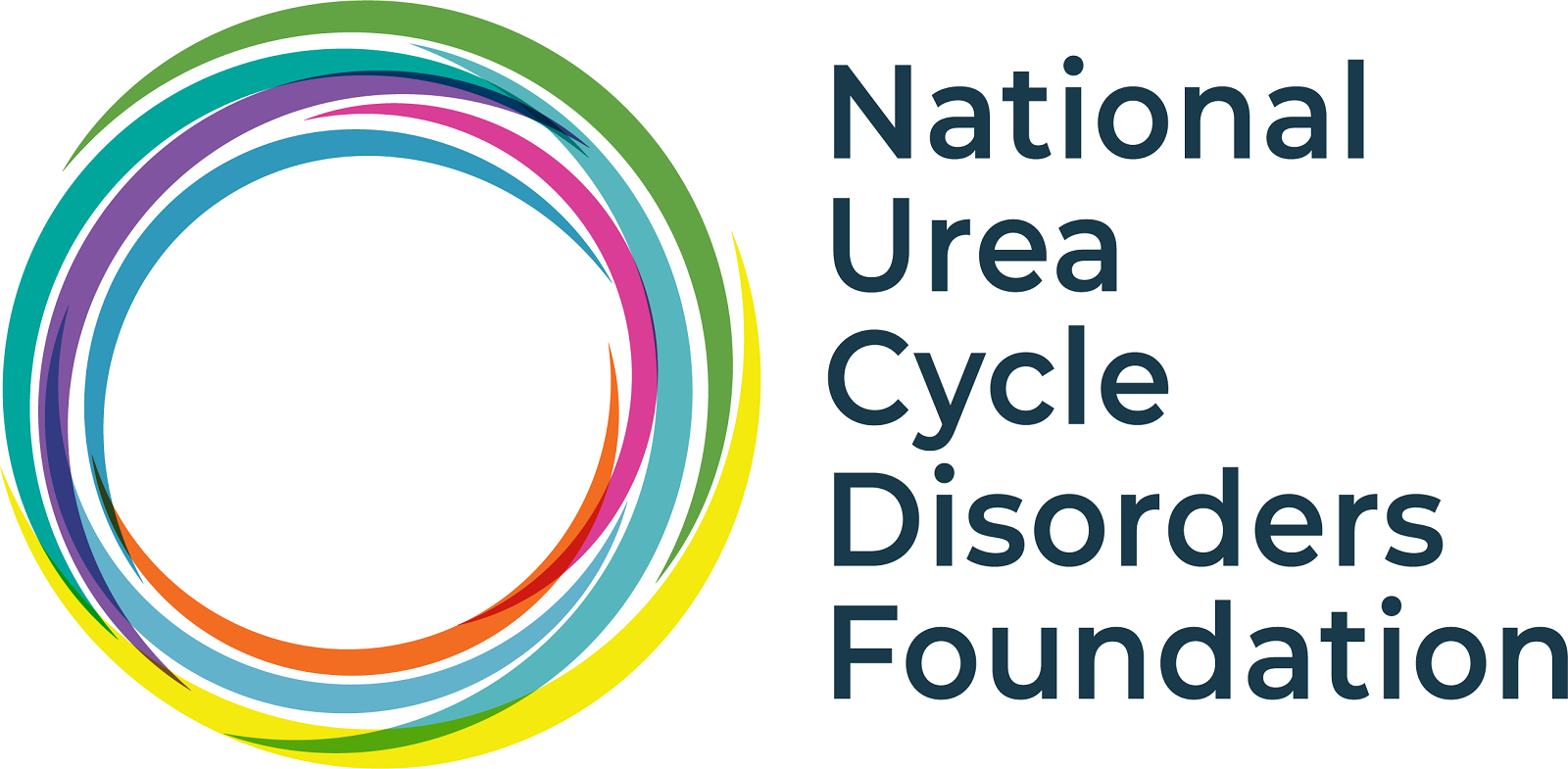
Patients with inborn errors of metabolism who have been hospitalized with high ammonia levels (hyperammonemia) are at high risk of acute seizures. A team of researchers led by Andrea Gropman, MD, formerly with Children's National Hospital but now at St. Jude's Research Hospital, undertook new research to learn more about the risks and impacts of these seizures.
Seizures can lead to changes in brain activity and potentially brain injury, causing problems with communication, attention, memory, thinking, or problem solving.
Question asked in this study
Continuous electroencephalogram monitoring (EEG) provides an uninterrupted view of a patient’s brain activity. How useful is EEG in managing treatment of patients with inborn errors of metabolism hospitalized with hyperammonemia?
Methods
Researchers reviewed EEG and medical records for 40 patients with inborn errors of metabolism (8 with urea cycle disorders, 7 with organic acidemias, 3 with maple syrup urine disease, and 22 with mitochondrial disease). Patients were admitted to Children’s National Hospital with high ammonia over a 10-year period.
Key findings
More than half of patients admitted showed some seizure activity on EEG. Monitoring results led to changes in care for several patients, such as starting new anti-seizure medications. EEG results also prompted imaging scans (MRIs) in 25% of admissions, which showed damage such as encephalomalacia (softening or loss of brain tissue), edema (swelling), and cortical and basal ganglia injury (potentially causing problems with controlling movement, speech, and posture).
Takeaways
- Early consultation with a pediatric neurology team and neuromonitoring in hyperammonemia cases can improve outcomes.
- EEG is a useful tool for management of acute hyperammonemia crises even in patients not experiencing clinical seizures.
- Patients may need anti-seizure medication in the short term.
- Older patients may be more likely to require ongoing seizure medication.
- Identifying subclinical seizures (those without noticeable symptoms) and background EEG abnormalities can lead to changes in care.
- Asymmetry and focal slowing findings on EEG may help identify patients at risk of seizures. Neuroimaging should be considered when those characteristics are present.
- EEG can be useful in monitoring for increased cranial pressure when more invasive modalities are not an option.
Next steps in this line of research
- Data from this article will be used to create a formal neuromonitoring protocol for acute care of hyperammonemia events in patients with inborn errors of metabolism.
Study authors call for creation of a multicenter IEM patient registry that includes EEG and other advanced neuromonitoring data for systematic study.
For more information
Access the scientific paper here: Sen K, Harrar D, Pariseau N, Tucker K, Keenan J, Zhang A, Gropman A. Seizure Characteristics and EEG Features in Intoxication Type and Energy Deficiency Neurometabolic Disorders in the Pediatric Intensive Care Unit: Single-Center Experience Over 10 Years. Neurocrit Care. 2024 Aug 13. doi: 10.1007/s12028-024-02073-4. Epub ahead of print. PMID: 39138714.
About the National Urea Cycle Disorders Foundation
NUCDF is a nonprofit organization dedicated to saving and improving the lives of children and adults affected by urea cycle disorders (UCDs) and raising awareness since 1988. Led exclusively by patients and families affected by UCDs, we are the driving force behind critical research to improve the understanding and management of UCDs, find new treatments, and ultimately a cure. NUCDF serves as a lifeline to patients, families, and medical professionals worldwide seeking information, support, and hope. Visit www.nucdf.org or email info@nucdf.org.
